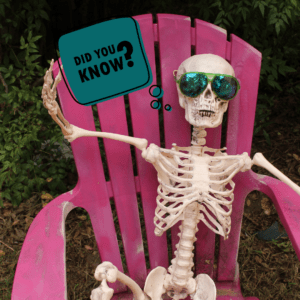Gardening is a beloved pastime for many, offering a sense of peace, accomplishment, and a direct connection to nature. 🌱
However, for all its benefits, gardening can sometimes lead to back pain, turning what should be a relaxing activity into a source of discomfort.😱 As Chiropractors, we often see patients whose love for their gardens has been overshadowed by persistent back issues. The good news is that with a few simple adjustments and preventative measures, you can enjoy your time in the garden without the accompanying pain. 🙌
Let’s dig deep into understanding and preventing back pain while gardening.
Understanding Gardening Induced Back Pain
Gardening often requires repetitive motions, prolonged bending, lifting, and twisting, all of which can put significant strain on the back. The key to preventing pain lies in understanding how these activities impact your body and adopting strategies to minimise their adverse effects. 🧠 🧐
Tip 1: Mind Your Posture and Movement
One of the most common causes of back pain in gardeners is poor posture. When you’re bent over pulling weeds or planting, your spine is often in a compromised position.🤯 To avoid this:
🌱 Use a gardening stool or kneeler: This helps keep your back in a more neutral position, reducing strain. Alternate between sitting and kneeling to avoid prolonged pressure on any one part of your body.
🌱 Bend from the hips, not the back: When you need to bend down, hinge at your hips and keep your back straight. This method, often called the hip-hinge, keeps the natural curve of your spine intact and engages your leg muscles, which are better suited for lifting and bending tasks.
Tip 2: Lift Smart, Not Hard
Lifting heavy pots, bags of soil, or other garden supplies can easily lead to back injuries if not done correctly. Follow these guidelines to lift safely:
✅ Assess the weight first: If an item feels too heavy, ask for help or use a wheelbarrow to transport it.
✅ Keep the load close to your body: Hold objects close to your torso to reduce the strain on your back muscles.
✅ Squat down by bending your knees and keeping your back straight: As you lift, push up with your legs rather than pulling up with your back. This technique distributes the load more evenly and protects your spine.
Tip 3: Take Breaks and Stretch Regularly
Gardening can be so engaging that hours pass without notice ⏰. However, prolonged periods of activity without rest can lead to overuse injuries and muscle fatigue. Incorporate these habits into your gardening routine:
🌱 Take regular breaks: Every 30 minutes, take a short break to stand up, walk around, and stretch. This helps prevent stiffness and reduces the risk of repetitive strain injuries.
🌱 Stretch before and after gardening: Gentle stretching can prepare your muscles for the work ahead and aid in recovery afterward. Focus on stretches that target your back, hamstrings, and hip flexors, as these areas often bear the brunt of gardening activities.
Gardening should be a joyful and therapeutic activity, not a source of pain. By paying attention to your posture, lifting techniques, and taking regular breaks, you can significantly reduce the risk of back pain. 😊
Remember, your body is your most important gardening tool… take care of it, and it will take care of your garden. If you do experience persistent back pain, consider consulting a Chiropractor to address any underlying issues and get personalised advice tailored to your needs.
Happy gardening!





